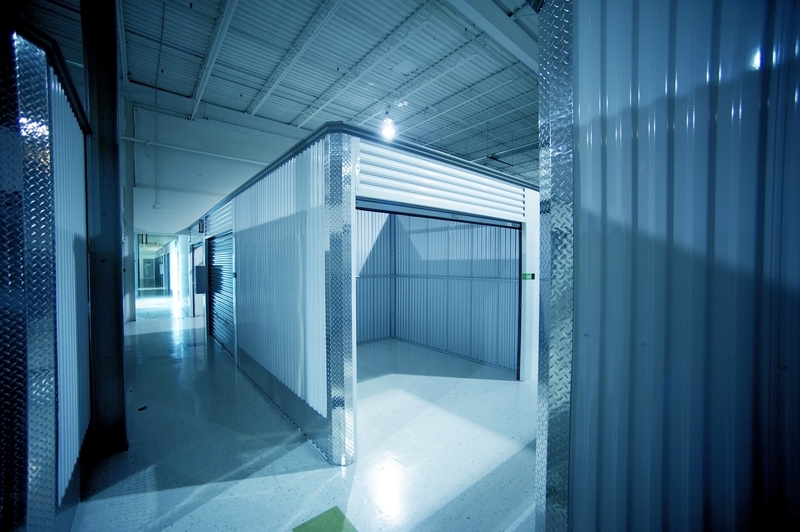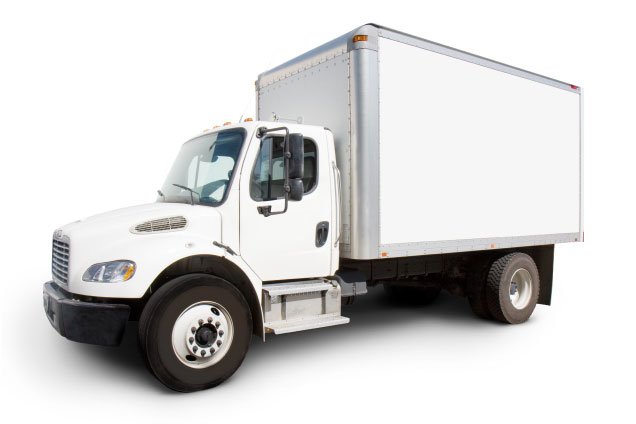Best Practices for Storing an Unused Freezer
Posted on 17/05/2025
Best Practices for Storing an Unused Freezer
Properly storing an unused freezer requires thoughtful planning and care. Whether you have an extra appliance you don't currently need or are temporarily disconnecting a freezer for storage, following the right steps will protect your investment and ensure the freezer is ready for use when needed. In this comprehensive guide, we discuss essential tips, actionable advice, and crucial considerations for storing an unused freezer safely and efficiently.
Why Proper Freezer Storage Matters
Even though your freezer is not in use, neglecting storage care can lead to costly damage, odors, or even mold growth. Practicing excellent freezer storage techniques preserves both the appliance and its lifespan, saving you money and time in the long run. Let's take a closer look at the reasons you should follow best practices for storing unused freezers:
- Prevents mold and odor formation
- Keeps mechanical systems in good condition
- Avoids rust and corrosion
- Protects internal components
- Maintains energy efficiency when brought back into use
Preparing the Freezer for Storage
Preparing your unused freezer for storage is the foundation of preserving its functionality. This process involves a thorough cleaning, proper defrosting, and careful attention to every component. Here's a detailed walkthrough:
Step 1: Unplug the Freezer
- Safety first: Always begin the process by unplugging the freezer from the power outlet. This reduces electrical risks and prepares the appliance for subsequent steps.
- Wait before handling: Allow the appliance to sit for a few minutes after unplugging. This ensures all moving parts have stopped and the internal pressure stabilizes.
Step 2: Empty the Contents Completely
- Remove all food items: Store, consume, or dispose of food safely.
- Check drawers and shelves: Make sure every compartment is empty.
Tip: Use coolers to temporarily store frozen goods if transitioning to another freezer.
Step 3: Defrost the Freezer
- Follow manufacturer instructions: Each model has specific steps--refer to your manual.
- Remove built-up ice: Let the freezer sit open until all ice melts naturally.
- Clean up excess water: Use towels to absorb any melting ice and moisture.
Skipping the defrosting process when storing a freezer can lead to unpleasant odors and long-term damage.
Step 4: Deep Cleaning and Drying
- Use mild detergent: Wash interior surfaces with warm, soapy water.
- Avoid harsh chemicals: They may damage liners or seals.
- Sanitize with baking soda: Eliminates odors and ensures freshness.
- Dry thoroughly: Wipe every surface dry with a clean towel. Moisture is a major enemy when storing an unused freezer as it can encourage mold and mildew.
Disassembling Interior Components
Remove and clean shelves, bins, and drawers separately. Doing so prevents mold, maximizes airflow, and protects delicate plastic parts from warping over time.
Leaving the Door Ajar: Critical for Air Circulation
One of the most important freezer storage tips is to leave the door slightly open during storage. This prevents bad odors and mold growth by allowing air to circulate. Here's how:
- Wedge a towel or spacer: Put a rolled-up towel or custom spacer between the door and the freezer body.
- Secure the door: Make sure it won't accidentally close completely.
- Label the appliance: Consider attaching a tag that reads "Door intentionally ajar" to avoid confusion.
Ideal Storage Locations for an Unused Freezer
Your freezer's long-term health depends heavily on where you store it. Different locations require different approaches to storage. Here are the top tips for storing a freezer in various environments:
1. Indoor Storage
- Climate control is beneficial. If you have space in a basement, garage, or utility room, these areas are best.
- Stable temperatures reduce stress on seals and gaskets.
- Keep away from moisture sources such as humidifiers or water heaters.
2. Garage or Outbuilding Storage
- Avoid extreme temperatures: Sudden heating or freezing can cause damage. Ideal range: 50?F-85?F (10?C-30?C).
- Elevate the appliance: Place on pallets or risers to protect from flooding or pests.
- Ventilation is key: Ensure enough space around the freezer (at least 2 inches from walls).
3. Outdoor Storage (With Caution)
- Not recommended unless necessary. If unavoidable, use waterproof covers and avoid direct sunlight.
- Check local codes: Some municipalities prohibit outdoor appliance storage.
- Periodic inspections: Check monthly for pests, rust, and other hazards.
Choosing the right location is a central element of best practices for unused freezer storage.
Dealing with Cords and Components
- Bundle cords neatly: Use velcro straps or zip ties and secure to the rear or inside the freezer.
- Keep manuals and small parts inside: A sealed plastic bag inside the freezer keeps everything together.
Pro Tip: Create a checklist of all removable items, including ice trays, door inserts, and shelving, to ensure nothing is lost during storage.
Pest and Odor Prevention Strategies
- Install moisture absorbers: Place silica gel packs or open boxes of baking soda inside the appliance.
- Use dryer sheets or activated charcoal: These help to absorb residual odors during long-term freezer storage.
- Inspect occasionally: Every few months, look for signs of pests, mold, or mildew.
Covering the Freezer during Storage
- Use breathable covers: Avoid sealing the freezer in plastic, which can trap moisture and cause rust.
- Dust protection: A cotton sheet or specially designed appliance cover protects against dust without limiting airflow.
Short-Term vs. Long-Term Storage Tips
The duration of storage affects your strategy:
- Short-term (under 3 months): Clean, dry, leave unplugged, and partially open. Inspect monthly.
- Long-term (3 months or more): More rigorous inspection, stronger odor and moisture control methods, and careful monitoring for pests or environmental hazards.
Steps to Reactivate Your Unused Freezer
When it's time to use your freezer again, follow these steps for safe reactivation and optimal performance:
- Inspect for pests or debris: Make sure the interior and exterior are clean.
- Check all gaskets and seals: Look for cracks, dryness, or gaps.
- Allow to air out: Air the freezer for a few hours before plugging in.
- Gradually plug in and power up: Listen for unusual noises.
- Wait for optimal temperature: Ensure it cools to the recommended temperature (usually 0?F or -18?C) before loading with food.
Additional Maintenance & Care Recommendations
- Lubricate door gaskets if needed: A light appliance-safe spray prolongs life.
- Level the freezer: Ensure it sits evenly in storage to avoid warping.
- Record storage location and duration: Maintain a log if you own multiple appliances or move often.
Key Mistakes to Avoid When Storing an Unused Freezer
- Never leave the door sealed shut: This traps moisture and can lead to mold.
- Avoid storing while plugged in: If not in use, unplug to prevent fire hazards and excessive energy consumption.
- Don't use airtight plastic covers: They hinder ventilation.
- Don't ignore maintenance: An unchecked appliance can develop issues unnoticed.
Frequently Asked Questions about Unused Freezer Storage
- Can I store my freezer outside in winter?
Only if properly protected from moisture and animals; even then, extreme cold can cause damage. - Should I put anything inside the freezer during storage?
Yes, use moisture and odor absorbers like baking soda or silica gel. - How often should I check on a stored freezer?
Monthly checks are ideal, especially in humid or pest-prone areas. - What if I notice a bad smell after storage?
Clean thoroughly again with vinegar or baking soda before reuse.
Summary: Making Freezer Storage a Success
The key to storing an unused freezer lies in preparation, ongoing care, and appropriate location choices. Whether you're keeping your freezer in the garage, basement, or a spare room, always remember to clean and dry the appliance, leave the door ajar, monitor regularly, and use proper covers. With these best practices, your unused freezer will remain in top condition and be ready when you need it again.
Following these guidelines ensures the longevity and reliability of your freezer--allowing you peace of mind and confidence in your storage strategy!







